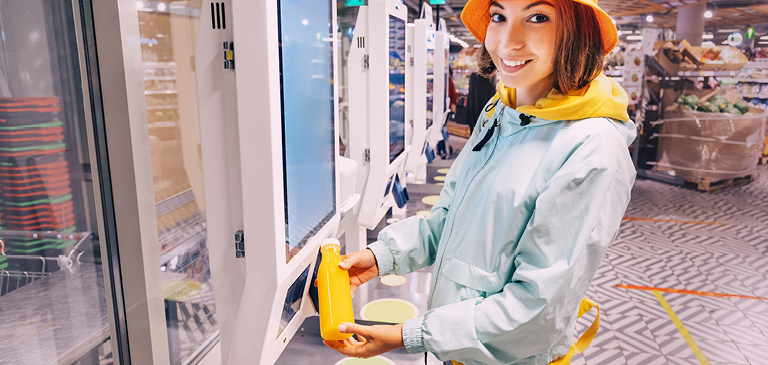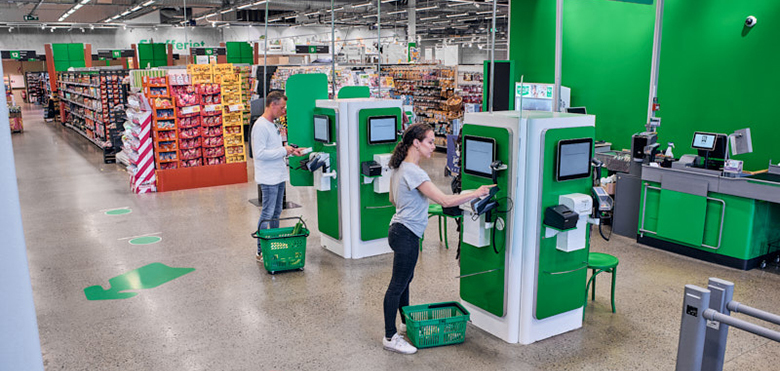How Retailers Can Unlock Maximum Value from Unmanned Stores
As shoppers return to brick-and-mortar stores, these stores are still facing a whirlpool of challenges – one of them being the change in consumer expectations. Today’s consumers tend to prefer tech-enabled, convenient, personalized, and socially distanced experiences that collectively set the stage for the rise of unmanned stores.
The Changing Face of Retail
The pandemic has inevitably impacted how people live, socialize, work, travel, and shop. Because of this, the retail landscape has undergone considerable transformation due to several factors; rapid advances in technology, the rise of e-commerce, and growing awareness around the convenience provided by that click and collect services. As a result, businesses needed to alter how they operate to meet the ever-evolving customer needs and remain relevant.
As 2022 continues to ease social distancing measures, the retail sector faces the challenge of seamlessly integrating its physical and digital models to fit new consumer priorities, attitudes, and purchasing habits. A store that promises fewer person-to-person interactions and more self-service options and yet must remain convenient and efficient is what the unmanned stores concepts can deliver.
Bridging the Gap between Consumer Expectations and Retail Experiences
Though retailers have only now fully embraced such a concept enabled by technology, the idea of unmanned stores is not a new one. Autonomous retail has seen great success with many large and small businesses, including Amazon Go and Aisle 24 in America, Cheers with Visa in Singapore, Crazy Candy in Sweden, and BingoBox in China.
The change in customer priorities amid the pandemic has been a driving force behind the second breath of unmanned stores. With personal health and safety taking precedence, consumers have fully embraced e-commerce and moved towards contact-free shopping.
According to Axis’ “Consumer Preferences Towards Unmanned Store Experiences” research, 15% of the respondents in the APAC region have a decreased intent for physical shopping and 31% favour stores with social distancing rules. With these concerns, alongside the recent comfortability and growth of e-commerce, today’s consumers expect frictionless, tech-enabled experiences – and meeting these expectations will be crucial.
To do so, it is vital to reimagine and adopt a strategy that augments the physical world with digital technologies that best support new consumer patterns. Unmanned stores are potentially the answer to this – through the use of technology, experiences are enriched through convenience, personalization, and maximised social distancing within a secure environment.
Our study also determined that safety – from a social distancing and health perspective – and security was perceived as crucial element for unmanned stores by consumers. To enhance security standards, operators can implement access control measures such as cardless or mobile QR code access as part of store entry procedures. Intelligent video surveillance and video analytics technologies can help to automate the implementation of social distancing measures such as audio voice warnings when customers are standing too close. In combination, these technologies can also help operators reach desired sustainability goals by automatically powering downlights and air-conditioning during lull periods and restarting themselves when needed.
Rather than becoming obsolete, humans will continue to play a role in the retail landscape. More than 40% of APAC respondents to Axis’ study expected unmanned stores to retain human support for assistance or emergencies. This is supported by a separate study that found employees could undertake tasks more efficiently when specific processes were automated, raising overall productivity. Instead of focusing on one or the other, businesses should leverage online and in-store channels and emphasize integrating the two for the best customer experience.
While overall complexity and mismatched expectations presented hurdles to early adopters of unmanned retail technology, operators found success through tighter integration of security, customer access, and customer experience processes. In another post on Secure Insights, we describe how access control, video and audio technologies can support autonomous retail. This way, your organisation will be in the best position to fully discover the best practices and operational efficiency to satisfy customers.
The Road to Autonomous Shopping
The pandemic has inevitably sped up the adoption of digital technologies, and these changes will likely stay for the foreseeable future. We firmly believe modern video surveillance technologies will be crucial to addressing operational security concerns without compromising consumers’ shopping experiences and delivering impactful customer experiences to maximize satisfaction and loyalty.
With the advantages of autonomous retail being hard to ignore, organisations worldwide need to consider incorporating autonomous shopping as part of their business goals. Although upfront investments may be a cause for concern, operators should focus on potential gains when calculating ROI, such as the long-term cost savings as acceptance of unmanned stores begins to accelerate.
Primed to be the future of the retail industry, unmanned stores are here to stay and are proving to be more relevant than ever before. The most successful retailers will be those that invest efforts towards fully understanding their customers and leveraging the right technologies to create a seamless shopping experience, unlocking maximum value from unmanned retail.
For more information about consumers’ expectations of unmanned stores in APAC, please download Axis Communications retail research report here.


